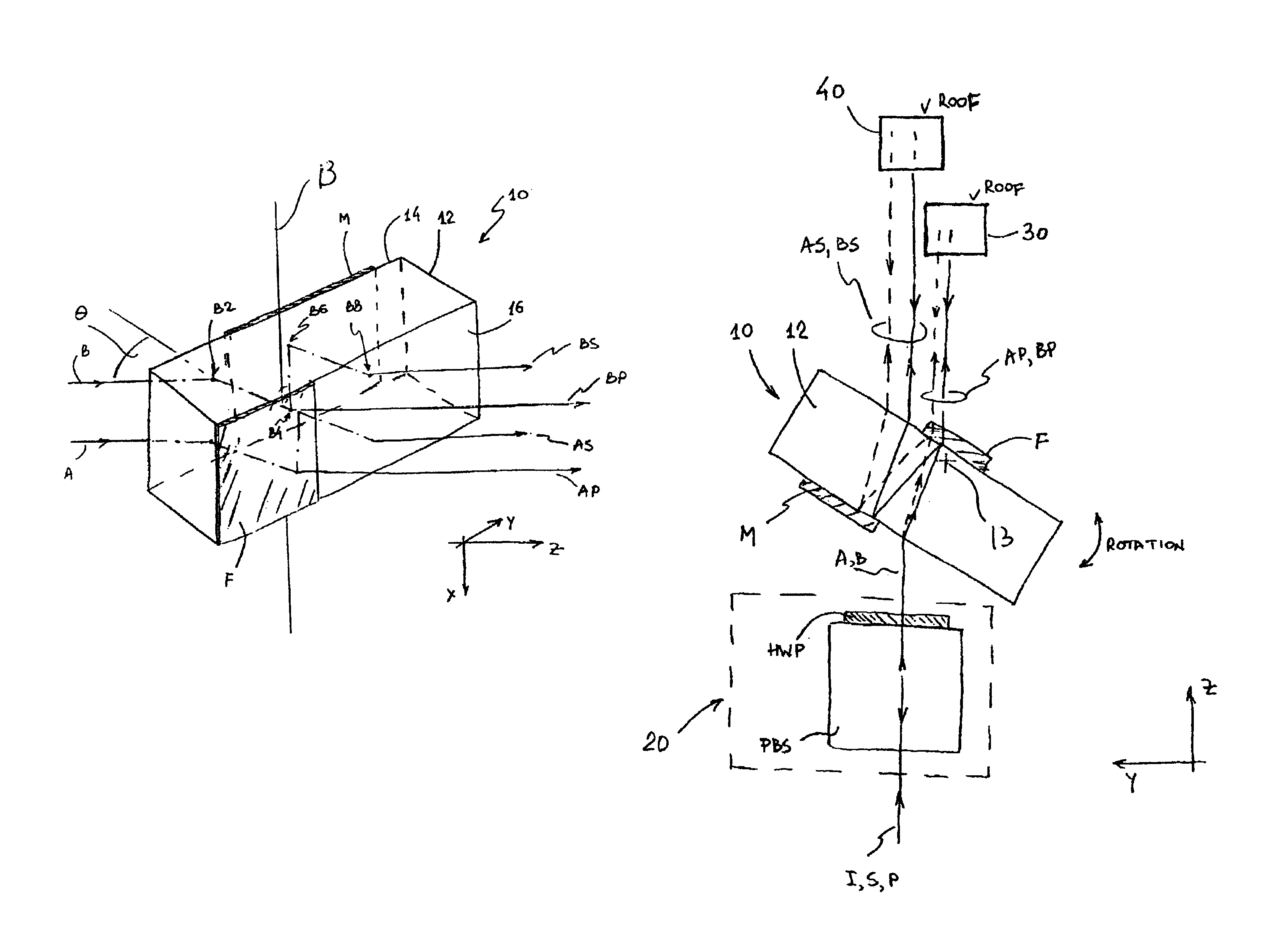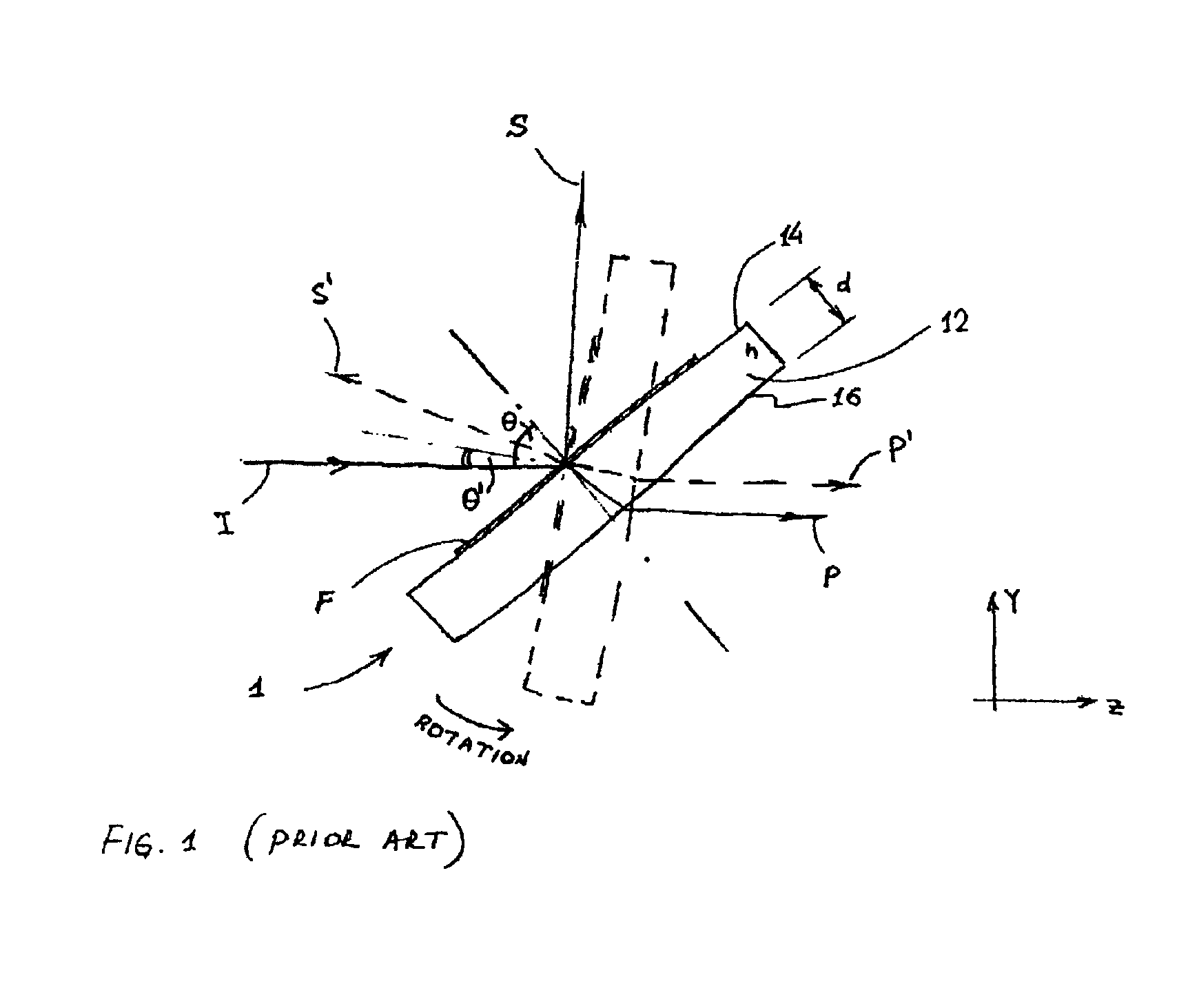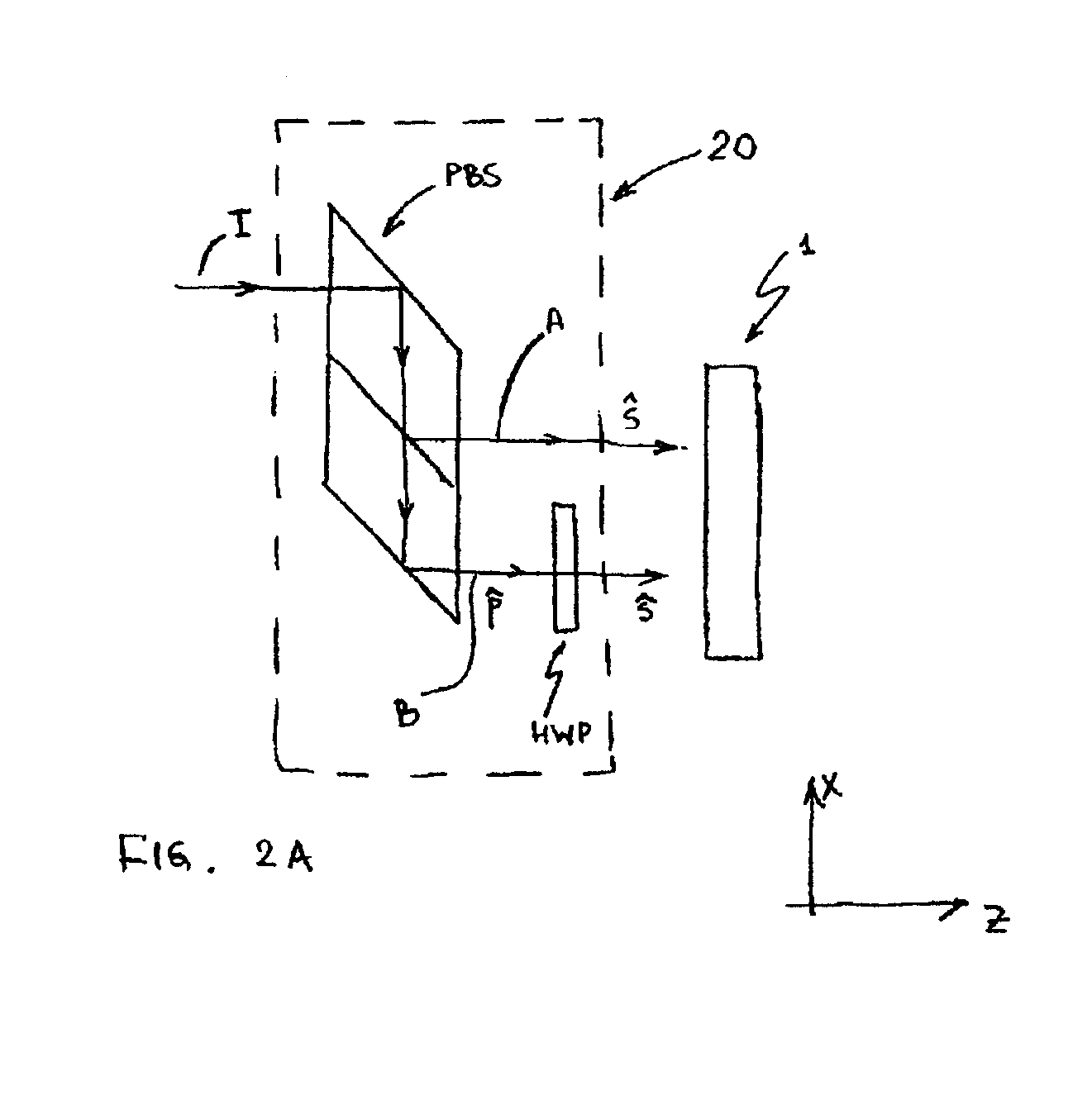Tunable filter for optical add/drop module
- Summary
- Abstract
- Description
- Claims
- Application Information
AI Technical Summary
Benefits of technology
Problems solved by technology
Method used
Image
Examples
Embodiment Construction
[0029]The invention is directed at providing a tunable thin-film filter system which overcomes the drawbacks of the prior-art configurations. Specifically, the dependence of the filter's spectral performance on the state of polarization of the input light and the spatial deviations of the channel beams due to filter rotation are eliminated. In addition, stronger spectral filtering of the input light is provided in a cost-efficient way.
[0030]In the following description of optical trains (which in the context of this invention are defined as sets of one or more optical elements performing the required optical functions), the loss of light on residual reflections at interfaces, on absorption in materials, and on scattering is of little relevance to the subject matter of the invention; thus, a discussion of these residual losses is omitted. In practice, they can be dealt with in conventional manner by providing an adequate level of AR-coating on corresponding optical surfaces and by ch...
PUM
 Login to View More
Login to View More Abstract
Description
Claims
Application Information
 Login to View More
Login to View More - R&D
- Intellectual Property
- Life Sciences
- Materials
- Tech Scout
- Unparalleled Data Quality
- Higher Quality Content
- 60% Fewer Hallucinations
Browse by: Latest US Patents, China's latest patents, Technical Efficacy Thesaurus, Application Domain, Technology Topic, Popular Technical Reports.
© 2025 PatSnap. All rights reserved.Legal|Privacy policy|Modern Slavery Act Transparency Statement|Sitemap|About US| Contact US: help@patsnap.com



